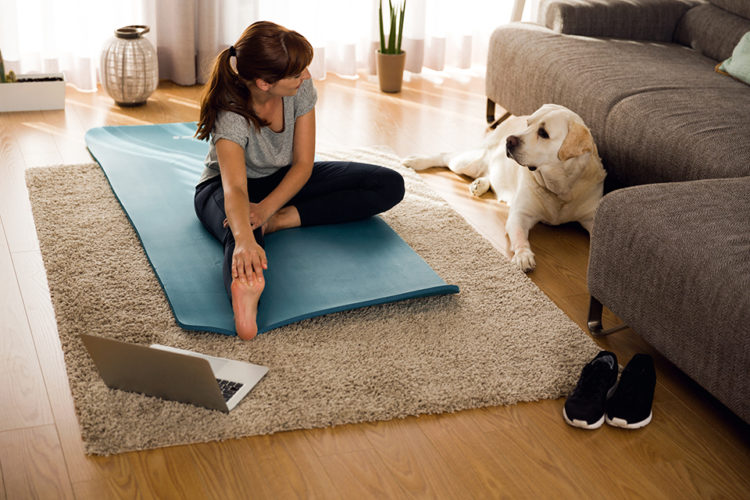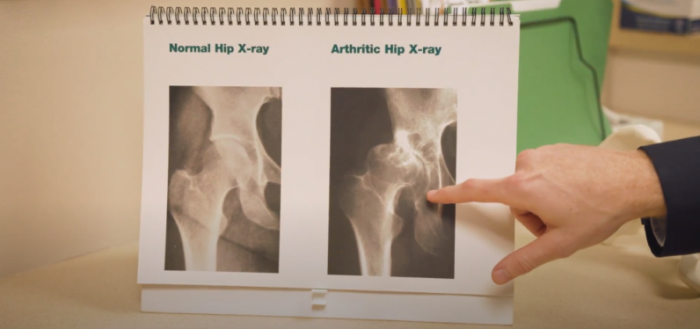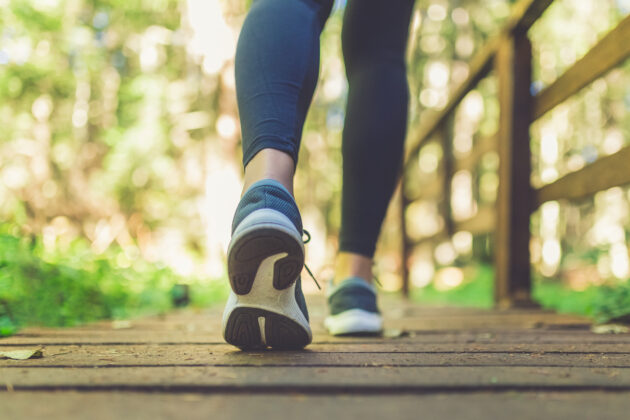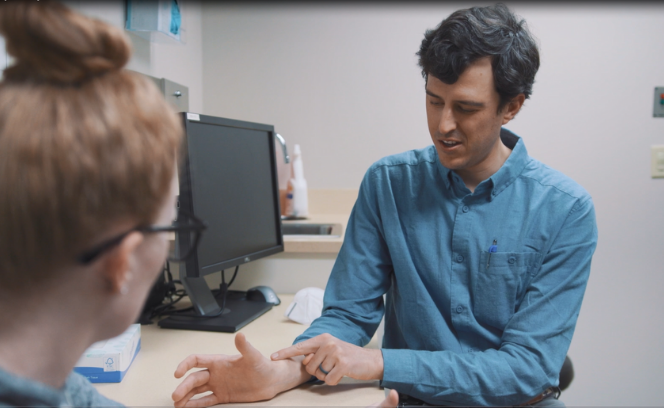
While some of us have found our new office view to be the kitchen sink or our bedroom dresser, others are finding themselves with more time on their hands to organize the garage or catch up on trending movies and TV. Our time in quarantine may look different neighbor to neighbor, but there are some very similar things we can all be mindful of that will help reduce our risk of developing back pain during this time at home.
Exercise and Stretch –
There are a number of benefits to exercising and stretching on a regular basis. A body in motion stays in motion, and implementing a daily routine focused on a complete body workout can help build important muscle that will help support different areas of your body, such as your back. For this particular area, combine exercise, like walking, with specific exercises to keep the core muscles in your back and abdomen strong and flexible. Strengthening your core muscles will help support your spine and can help prevent back pain.
Stretching is just as important as exercising. It also feels REALLY good, and the best part of all is that stretching requires no equipment and can be done any time, any place. Here are a few stretches to get you started.
Head Rolls
This stretch supports the cervical spine and trapezius. You should feel this stretch all around your neck and into your upper back.
Kneeling Back Extension
This stretch should be felt in your lower back and your abdominals.
Sitting Rotation Stretch
A stretch that when done properly, will be felt in your buttocks, as well as your sides.
Modified Seat Side Straddle
You should feel this stretch in the back of your thighs and into your lower and middle back.
For examples of these stretches and for more strength and conditioning ideas, we love this Spine Conditioning Program created by OrthoInfo.
Weight Loss
Some people suffer from back pain because of an unhealthy body weight. Back pain may be reduced by lowering body weight to decrease the stress and pressure it is placing on the lower back and spine.
Avoid Smoking
When we think about smoking and the ill effects it has on our health, we don’t often think about the harm it causes to every tissue in the human body. Both smoke and nicotine can cause the flexible discs that lie in between the vertebrae in your spine to degenerate or wear out faster than normal.
Proper Lifting
There is a right and wrong way to lift items. Even lifting the smallest, lightest object can cause damage to our lower back if proper form is compromised. How you lift items has a direct impact on your spine health.
Guidelines for proper lifting:
- Take some time to determine your plan for lifting and do not rush.
- Position yourself close to the object you want to lift.
- Stand with your feet shoulder-width apart to give yourself a solid base of support.
- Bend at the knees.
- Tighten your stomach muscles.
- Lift with your leg muscles as you stand up.
- If an object is too heavy or is an awkward shape, do not try to lift it by yourself. Get help.
Supporting your back while sitting –
The majority of us do our fair share of sitting. Whether it be for our jobs or for leisure, there is a proper way to sit that will be the most beneficial for your spine and back.
- When sitting, keep your back in a normal, slightly arched position.
- Make sure your chair supports your lower back.
- Keep your head and shoulders erect.
- Make sure your working surface is at the proper height so you don’t have to lean forward.
- Once an hour, if possible, stand, and stretch. Place your hands on your lower back and gently arch backward.





